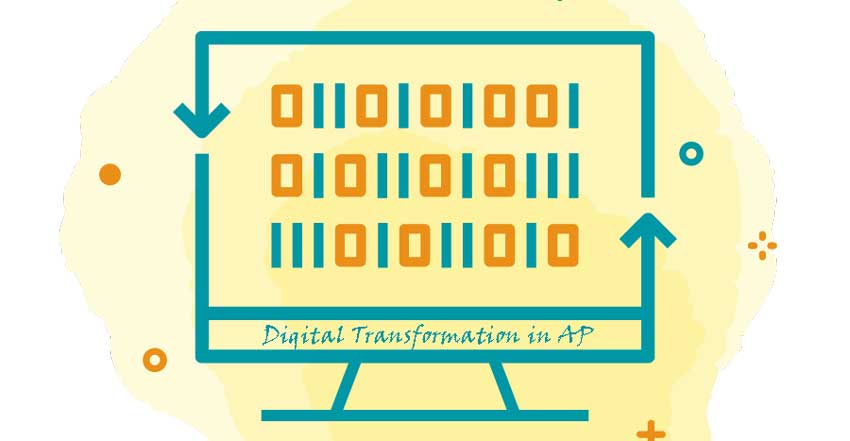
Accounts Payable (AP) is a fundamental activity for any business. Pick any enterprise in any industry, and you can bet there is an AP function at the heart of financial operations. As a result, they all share a common opportunity today, and that is to automate their AP functions. Whereas other areas of business and commerce have become more paperless, the accounts payable process in many organizations continues to be plagued by the burden of paper and manual workflow. The result is an often costly and people-intensive process that leaves companies vulnerable to competitors and financial executives with a growing unease over these inefficiencies.
Organizations of all sizes and from all industries share a common opportunity: to automate their Accounts Payable functions.
“Digital Transformation” is changing all that, and companies find that Accounts Payable automation is making a real difference. According to a study conducted by AIIM International last year, “Finance and Accounting in 2017: Automating Core Information Workflows,” organizations that automate AP are experiencing measurable improvements. Forty-five percent say that better monitoring of invoice status is a top benefit, and 44% cite better records for audit trail or litigation as a major advantage. Faster turnaround time to payment is also named by 44% of respondents to be one of the biggest benefits, and 22% of the organizations surveyed report reductions in cost of 25% to 50% by automating Accounts Payable.
Automation Opportunity
How can you capture the advantages? It starts by adopting a combination of hardware, software and business systems that work together to reduce and eliminate the mundane and manual tasks that plague the AP process. By relieving the burden of manual data entry and other routine and repetitive activities, accountants and analysts are free to function in more productive and value-added activities. This reduces costs and inefficiencies, and helps AP teams be more productive and focused on adding value to the organization.
While it may seem too costly or complex to automate your Accounts Payable functions, new systems and approaches make it easier and more affordable to capture the advantages. Software systems to manage the AP process — including automated invoice data extraction, document management, workflow automation, and advanced analytical tools — are all available. Many of them are highly accurate and intuitive, incorporating advanced data capture and machine learning techniques that reduce errors and double payments, ensure cost savings from reduced manual processes, and provide much greater visibility into the process overall.
Four Important Benefits
- Reduce procure-to-pay time. AP automation helps accelerate the pace of business by capturing data and routing validated data directly to business systems. Documents are classified, data located and verified data extracted directly into your ERP system without the need for manual data entry. This reduces the time employees spend on menial tasks and gets the entire process moving along a whole lot faster. By handling an invoice once, you automate the review process – saving time, increasing data accuracy and ensuring your workflow is handled efficiently.
- Capture early payment discounts. Automating AP can help you take advantage of early pay discount incentives that you may be missing. Since invoices are processed more quickly and data is stored in and accessed directly from your ERP system, AP staff have all the records and information that they need to pay more promptly and capture more discounts. The reduction and elimination of late payment penalties and improved cash flow overall are compelling reasons to automate.
- Improve vendor and customer relations – Consider the adage: A happy customer is a repeat customer. The same holds true for the vendors who help keep your business running. If you manage and pay accounts faster and with more accuracy, you will build even stronger and more loyal relationships with your suppliers. Since information flows more freely between departments and agents, vendor and customer inquiries are answered more quickly and more precisely. The result is that issues are resolved before they become larger problems and the entire procure-to-pay process is streamlined.
- Gain greater insight – By virtue of having greater visibility into the process and more precise data, AP automation allows you to more accurately predict financial outcomes and make better business decisions. Since all the related content is easily searched and accessed, financial managers have a more complete and immediate view of their data to reliably run their predictive analytics. As a result, CFOs have a clearer picture of where they stand financially and AP professionals are better able to eliminate invoice processing bottlenecks, focusing on those accounts that need attention and improve cash management overall.
While it may have seemed too costly or complex to automate AP in the past, new approaches make it easier and more affordable to capture the advantages.
Moving Forward
Not all solutions are created equal; especially as you consider how data capture and digital transformation overall can be used in new and more beneficial ways throughout your organization. Use these key benefits to help identify which features and capabilities are most important to you and which AP automation approach best fits your needs. Look for providers and partners with the right mix of expertise, vision and capability that allow you to capture the increasing value of digital transformation.
# # #
Guest contributor Kevin Craine is the author of the book Designing a Document Strategy and host of AIIM On Air, the podcast for AIIM International. He was named the #1 ECM Influencer to follow on Twitter. Find him at CraineGroup.com.
# # #
Find out more about Parascript AP transaction data extraction (invoices, receipts, checks and more) powered by machine learning:




